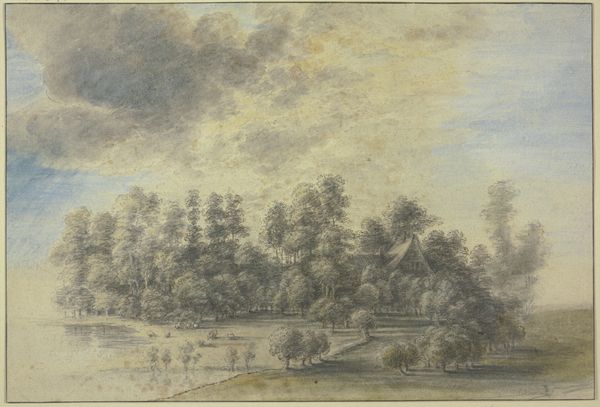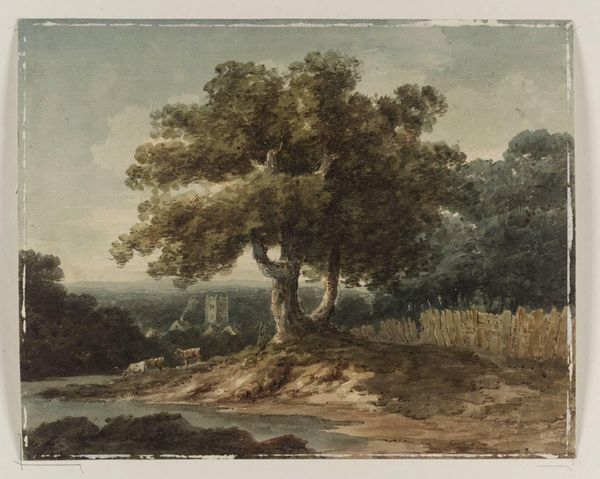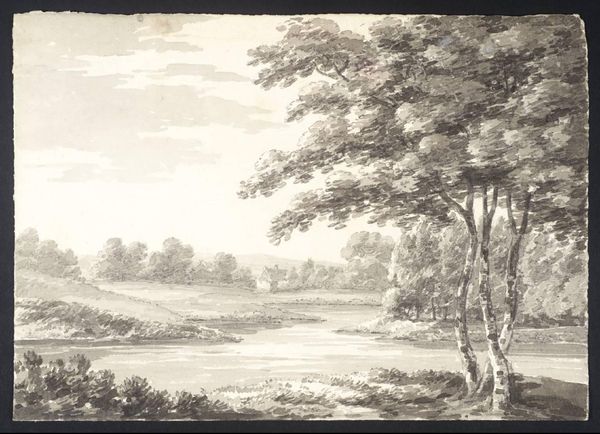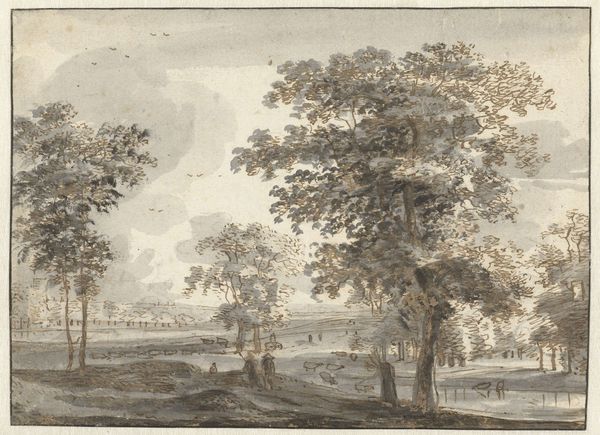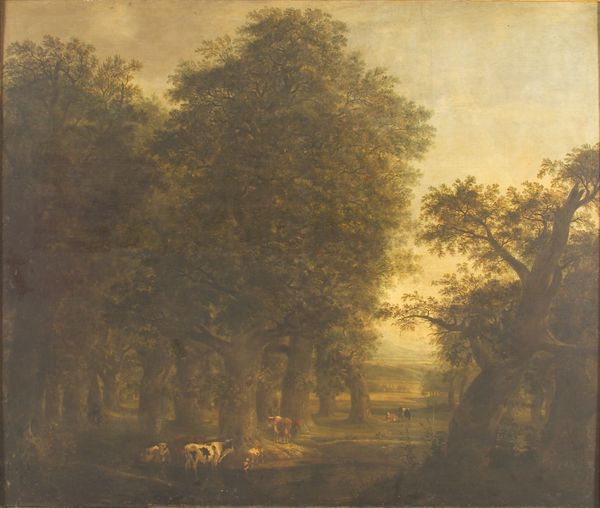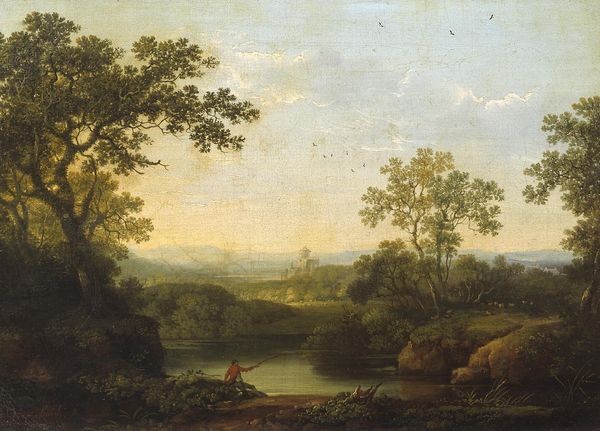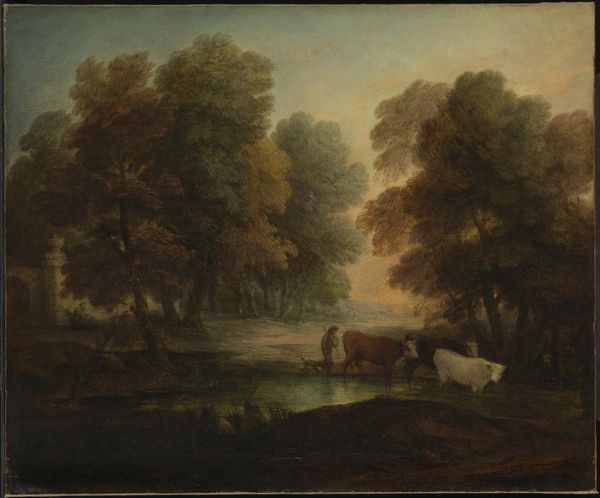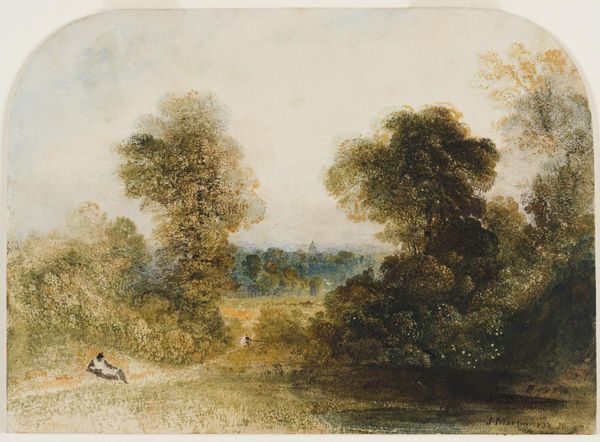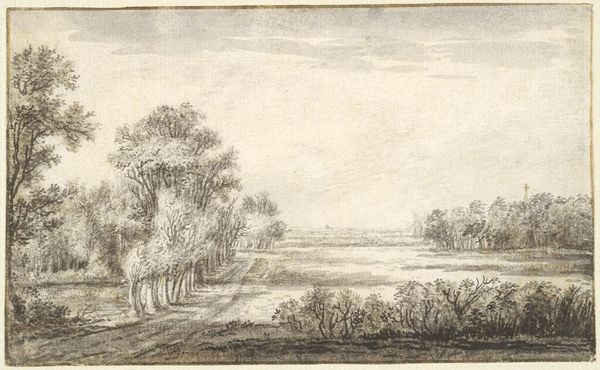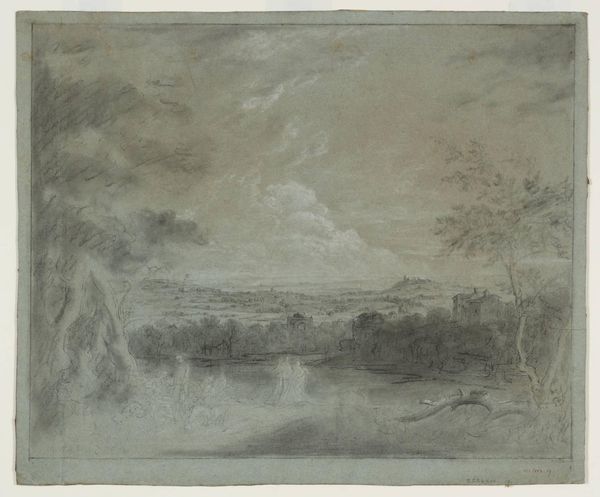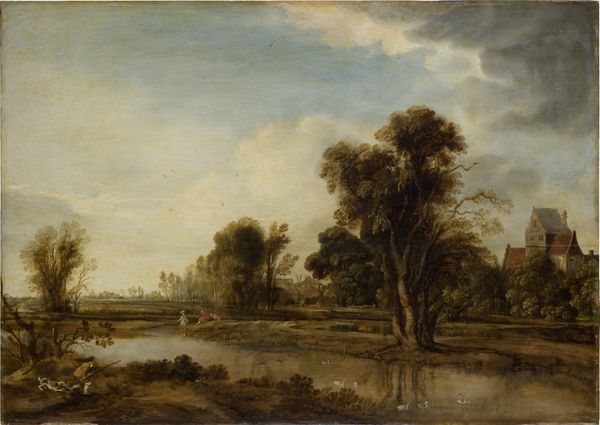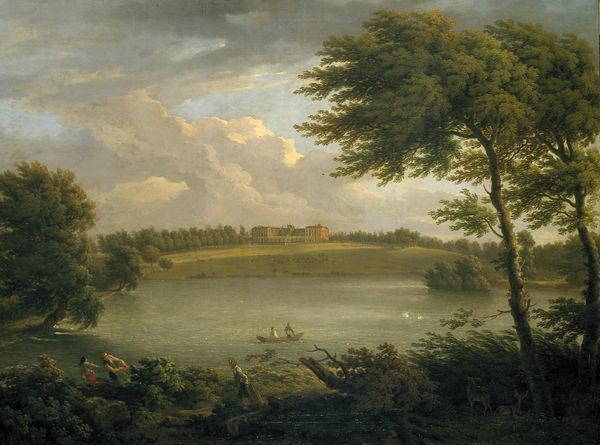
Landscape outside Copenhagen with Frederiksberg Church and Palace in the Distance 1788
0:00
0:00
Dimensions: 25.5 cm (height) x 37 cm (width) (Netto), 34.5 cm (height) x 45.6 cm (width) x 4.4 cm (depth) (Brutto)
Editor: So, this is Erik Pauelsen's "Landscape outside Copenhagen with Frederiksberg Church and Palace in the Distance," painted in 1788. It's an oil painting with a rather subdued palette. The atmosphere feels so tranquil, almost melancholic. What do you see in this piece, considering its historical context? Curator: Well, first, it’s interesting to note Pauelsen's commitment to *plein air* painting, which, while not entirely novel, signaled a shift towards direct engagement with the landscape. The cityscape is also particularly interesting in this painting. Frederiksberg Palace wasn't just a building; it represented royal power, patronage, and a very specific social order. How does Pauelsen position it in relation to the natural landscape and, crucially, to the viewer? Editor: I guess it's sort of distant, almost fading into the background. It's present, but not dominating. It definitely invites reflection on its role in the whole landscape, and the lives connected with it, more than declaring its prominence. Curator: Exactly. Pauelsen invites us to contemplate Copenhagen and its society. He depicts the landscape as both picturesque and functional, with hints of agrarian life existing alongside symbols of aristocracy. How do you think this portrayal aligns with or challenges the artistic conventions and the socio-political climate of the late 18th century? Was it challenging or maintaining the accepted public views on such hierarchies? Editor: It’s like he’s hinting at social commentary, showing the existing order almost blending in as a part of something wider. So, he seems to be documenting more than challenging, although the intention could be read either way. Curator: Indeed. That ambiguity might have allowed the artwork a wider reception within the institutional context of the time, no? Art serves multiple purposes within the societies it reflects. So, that the work is exhibited speaks of certain established conventions being negotiated. Editor: It's fascinating how the landscape tradition can embody so many cultural cues! Thanks for that perspective. Curator: A pleasure. I will be sure to look out for that dynamic more!
Comments
No comments
Be the first to comment and join the conversation on the ultimate creative platform.
